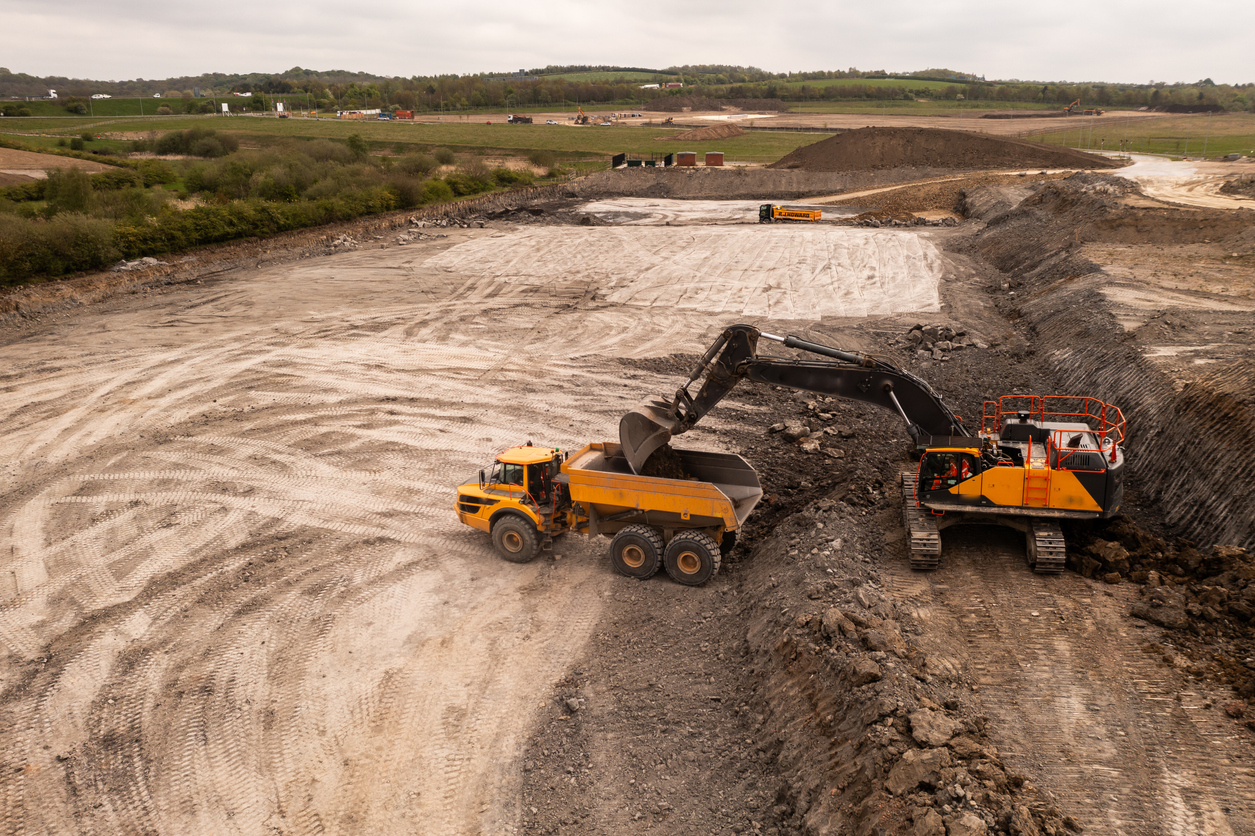Client Alerts
State Launches $750 Million All Ohio Future Fund for Project-Ready Sites
February 2024

Client Alerts
State Launches $750 Million All Ohio Future Fund for Project-Ready Sites
February 2024
On February 16, Ohio launched the All Ohio Future Fund (AOFF), which provides $750 million in funding to assist communities with infrastructure costs in order to create project-ready economic development sites. The purpose of the funding is to attract new businesses or grow existing Ohio businesses. It is not meant to be a job retention program.
What type of funding is available?
The money will be awarded as 0% interest loans that are “partially forgivable” (although the program guidelines indicate grants may be awarded on a “case-by-case” basis). There is no minimum or maximum amount of funding available.
Up to 75% of the project costs can be funded as a loan. The remaining 25% of project costs are considered a match requirement by the applicant.
Forgiveness will be based upon whether
- an end user is identified within five years of funding
- wages associated with the end user are 25% above the median community wage
- the end user operates in one of JobsOhio’s targeted sectors
For so-called “mega sites”, the end user must commit to use the lesser of 50% or 200 acres of the total site.
If the factors for forgiveness are not met by the end of the five-year period, the remainder of the loan would be amortized, and loan payments will begin to be due. The term of the loan will be up to 25 years.
Who is eligible to seek funding?
The list of eligible entities includes the following: counties, cities, villages, townships, port authorities, community improvement corporations, transportation improvement districts, conservancy and park districts or other similar park authorities, land reutilization corporations, nonprofit organizations, and organizations for profit.
If non-profit or for-profit organizations want to apply for funding, they are required to include evidence of support from the county or local government. Such non-governmental applicants must have entered into an agreement with a unit of local government to work collaboratively on the project, including working to address zoning requirements, project timelines, and possible incentives to attract an end user.
If a project received brownfield funding from the Department of Development’s Brownfield Remediation Program, it is still eligible for AOFF, but preference will be given to projects that did not already receive other state assistance.
How will the projects be evaluated?
In the application for the project, the applicant must specify the projects “site capacity targets” if funding is provided which includes:
- Number of acres (contiguous/non-contiguous)
- Electricity capacity (MW)
- Water capacity (gallons per day)
- Wastewater capacity (gallons per day)
- Gas capacity (MCF/hr)
Applicants should also describe in the narrative portion of their applications why the site is critical to the local community, prospects for attracting end users, and other factors for why the project should receive priority for funding. (See discussion below of project preference factors.)
What restrictions are on either ownership or end use of the property?
The goal of the funding is to create more shovel ready sites for industrial end use. The program guidelines include a restriction that no more than 20% of the proposed project may include retail, entertainment, multi-family, point-of-care medical services, higher education, or commercial office space (so called “mixed-use” projects).
The project is targeting business growth and not simple relocations of existing Ohio businesses. The program guidelines state that the proposed site must attract a new end user to Ohio or a new project from an entity with existing Ohio operations. Recipients of funds are expected to find a suitable end user within five years of disbursement.
Does the property have to be government owned?
No. However, if the property is not under public ownership or control, the owner must agree to contribute toward the costs of any upgrades to the property.
What costs are eligible for funding?
Eligible costs include the following:
- Public roadwork
- Water/wastewater and related infrastructure
- Design/engineering
- Demolition
- Wetland mitigation
- Utility-gap funding to connect to gas/electric; or relocate utilities on-site (with end user identified)
- Other one-time enhancements
Brownfield cleanup costs are eligible according to the FAQ. However, preference will be given to sites that did not already receive such funding.
Funds cannot be used for land/site acquisition directly. Funds cannot be used for either building construction and/or refurbishment of existing structures.
What types of projects is Ohio targeting with the funding?
Ohio seems to be targeting very large vacant properties that need base level infrastructure to be considered “project-ready.” The program guidelines list the following preferences:
- Publicly owned
- Sites that meet JobsOhio’s Site Certification Criteria
- 30 or more acres
- Sites with advanced plans for infrastructure improvement
- Locations that will “create a more even distribution of economic development project-ready sites across the state.”
- Sites that have access to sufficient labor/talent resources
- Sites with large end-use capacity which includes the following metrics:
- 200 acres
- 500,000 gallons per day water capacity
- 500,000 gallons per day sewer/wastewater capacity
- 111 MCF per hour gas capacity
- 40 MW electrical capacity
What is the process for submitting projects and how will projects be reviewed?
The portal to submit applications will be open for one year.
Step 1 – Submit an Indication of Interest (“IOI”) outlining the project and its alignment with the criteria discussed above and in the program guidelines. Review the IOI checklist to ensure the information is submitted accurately. In addition, applicants will need to provide a narrative description of their project that addresses the criteria DOD established in their narrative form guidance. Completed applications will be submitted to AOFF@development.ohio.gov
Step 2 – Department of Development (DOD) will review IOIs on a rolling basis. DOD will coordinate with JobsOhio and other state agencies to perform due diligence on the project and also see if there are other more appropriate funding options. Unlike DOD Brownfield Remediation Program, loans will not be awarded on a first-come, first-served basis. Rather, DOD will make awards based on whether it determines the proposed project to be a priority.
Step 3 – Once approved by DOD, each loan will need to be approved by the Ohio Legislature Controlling Board.
Step 4 – Upon loan award, DOD will enter into a loan agreement that will likely include a clawback provision if an end user is not identified within five years of project award. Recipients will also be required to report on project progress to DOD.
DOD is targeting the Spring of 2024 for the first awards.
ADDITIONAL INFORMATION
For more information, please contact:
- Joseph P. Koncelik | 216.696.2373 | joseph.koncelik@tuckerellis.com
This Client Alert has been prepared by Tucker Ellis LLP for the use of our clients. Although prepared by professionals, it should not be used as a substitute for legal counseling in specific situations. Readers should not act upon the information contained herein without professional guidance.

